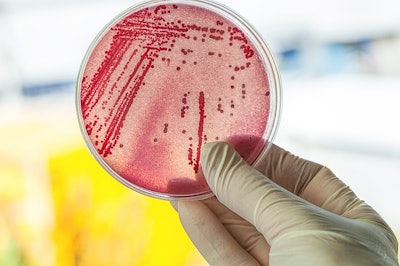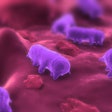
Campylobacter is one of the leading causes of foodborne illnesses in humans in the U.S., but there is still much to learn before effective preharvest control of the pathogen in poultry can occur.
“In the future, I think our success is going to be what things can we do on the farm to minimize our load of Campylobacter coming onto the plant,” Dr. Charles Hofacre, president of the Southern Poultry Research Group, said during a Poultry Science Association webinar on the topic.

Campylobacter is responsible for 1.5 million illnesses in the U.S. each year, the Center for Disease Control and Prevention (CDC) estimates. Approximately four out of every five instances of Campylobacter in people results from handling and eating contaminated chicken meat.
The bacteria can be difficult to treat, and many strains are now multi-drug resistant, concluded a recent report, making Campylobacter control even more challenging.
Unknowns
Campylobacter behaves differently in broilers than another common cause of foodborne illnesses linked to poultry, Salmonella.
For example, in one of Hofacre’s recent research projects in broilers, 91% of the samples taken from the farm tested positive for Salmonella. Campylobacter was present in only 61% of the samples. At the processing plant, the flock level prevalence of Salmonella detected remained similar at 95%. However, Campylobacter was detected in 87% of samples, a significant difference.
“This shows that our interventions aren’t reducing Campylobacter to the same account as they do with Salmonella,” Hofacre said.
There is intense pressure to develop better preharvest approaches to food safety in the poultry industry right now, especially when it comes to Salmonella. In August 2022, the U.S. Department of Agriculture’s (USDA) Food Safety and Inspection Service (FSIS) classified Salmonella as an adulterant in certain types of breaded and stuffed raw chicken products. This was followed by the unveiling of a proposed framework to improve Salmonella control in poultry products in October 2022.
“What we understand about Campylobacter is very small compared to what we understand about Salmonella,” explained Hofacre. “A lot of what we understand about Campylobacter is what we’re learning today, and we’ll be learning a lot more in the future.”
Campylobacter control
Pests – beetles, flies, rodents and more – are common vectors for Campylobacter in poultry operations. They’re also overlooked a lot, especially when it comes to food safety concerns.
In fact, in Europe, researchers found a strong correlation between fly populations and Campylobacter incidences on poultry farms. As a result, some European countries require fly screens on all air inlets to prevent the insects from entering broiler houses.
“For us in the U.S., I don’t think flies are as critical,” said Hofacre. “I think that darkling beetles are a bigger risk for us.”
Darkling beetles are an invasive species of insect that feed on grains and like to live in places with warm temperatures and moist environments, such as a broiler house. They’re also an attractive source of protein for poultry, which means that whatever pathogen is inside the beetle then ends up inside of the bird.
“In the U.S., darkling beetles are one of our major Achilles heels when it comes to Campylobacter,” he added.

A combination of strict biosecurity, hygiene practices and sanitation are key to minimizing pests – and therefore Campylobacter – in the poultry house. These interventions include step over barriers/boot change, alcohol gel for hands, rigorous cleaning and disinfection protocols, using separate buckets and equipment for each house, heat treated litter, fly, beetle and rodent traps and regular treatments with insecticides.
Another source of Campylobacter in broiler operations is contaminated litter, although as Hofacre said, “we don’t know why yet.” Like Salmonella, Campylobacter struggles in an acidic environment, so finding ways to lower the pH in litter may help improve Campylobacter control in the poultry house.
Unfortunately, there are very few interventions currently available for Campylobacter.
Bacteriophages – which harness viruses to target and destroy bacterial cells – show some promise in tackling Campylobacter. However, some experts worry any Campylobacter strains that evade the technology will evolve to become more resistant to treatment methods. Instead of bacteriophage technology containing a single virus, a cocktail of viruses may instead be more effective.
Another potential intervention is vaccination, but researchers have yet to develop an effective vaccine against Campylobacter.
“I expect that we’ll see more success as Campylobacter becomes more of an issue on the farm, but as of yet, we don’t have anything that I can put my hand on my heart and suggest for people to use. I think we’re probably going to have to look at multiple interventions to get those numbers down,” Hofacre said.
“I would like to strongly encourage people to do some research and help us with Campylobacter before it becomes a major issue so that we have some interventions already worked out.”
Winds make Campylobacter more likely in outdoor chickens www.WATTAgNet.com/articles/47073















